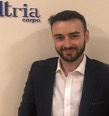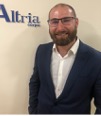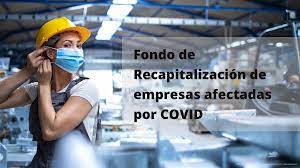Rubén Huertes, Federico Suárez and Álex Pardillos, new consultants with proven experience to continue leading the sector.

Altria Corpo has just reinforced its team in the Corporate Finance Area with two professionals who will drive the business from its Madrid office. Rubén Huertes and Federico Suárez have a recognised track record in the financial sector and have in-depth knowledge of the corporate finance business in the medium and large company segment.
Rubén Huertes has spent 12 years managing corporate banking clients at Banco Santander and AKF Bank, where he was responsible for the factoring business. He holds a degree in Business Administration and Management from the Universidad Rey Juan Carlos in Madrid and a Master’s Degree in Commercial Banking from the Universidad de Alcalá de Henares.

Fede Suárez joins Altria Corpo after more than 20 years of successful career at Banco Santander and Banco Sabadell, where he held senior positions in the corporate business. In recent years he has promoted the management and financing of real estate assets at Aliseda and has advised on the financing of companies and real estate projects. He holds a degree in Business Studies from the San Pablo CEU University in Madrid and has complemented his training with a Master’s degree in Finance and several specialised courses in corporate financial advice.

In addition, the Barcelona team, which already had 14 people between consultants in the corporate area, the analysis team and a team specialised in external financial management and turnaround processes, incorporates a new consultant. Álex Pardillos has more than 7 years of professional experience in different roles in financial and strategic consultancy as well as in the management of Corporate and Business Banking in entities such as Banco Santander or Targobank. Álex holds a degree from the University of Barcelona and has complemented his academic training with certifications in the financial field at the University of Cantabria, IE Business School and EADA.
We welcome these new additions and wish them every success at Altria Corpo.
Altria Corpo is a financial consultancy for medium and large companies, founded in 2014 by Albert Gumà and with offices in Barcelona, Madrid and Luxembourg. Its main services are advice on debt and equity financing, and access to more than 160 financial providers including banks, alternative financing, debt funds and other instruments. In its 8 years of existence, Altria Corpo has positioned itself as a benchmark in the search for financing for medium and large companies, with an accumulated amount of more than 350 million euros and more than 500 operations financed. The scope of the companies advised covers the whole of Spain, with a concentration in Catalonia, which represents 75% of the total amount advised.






